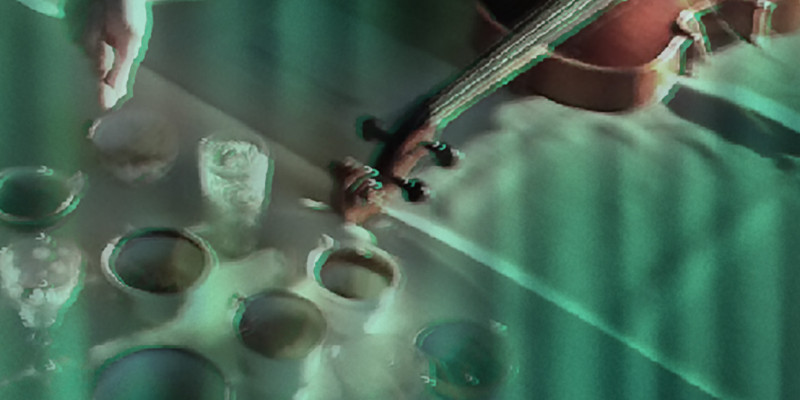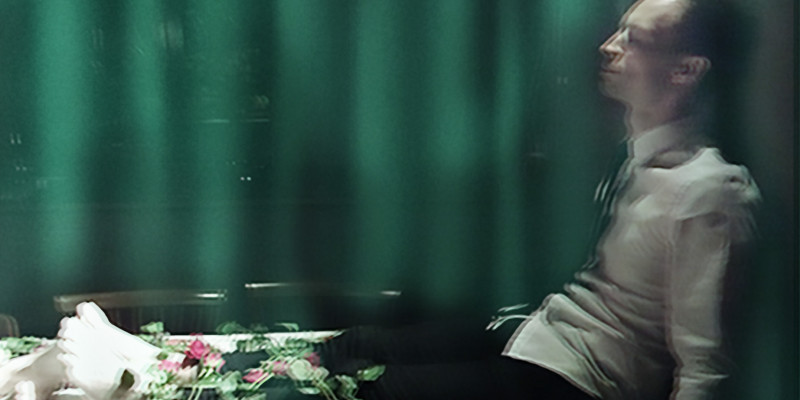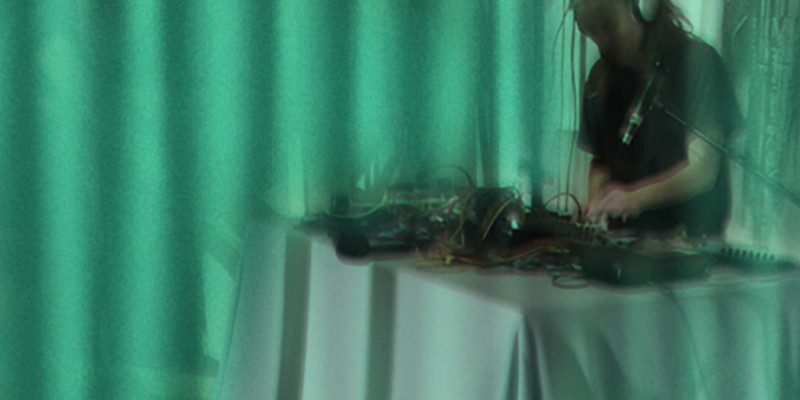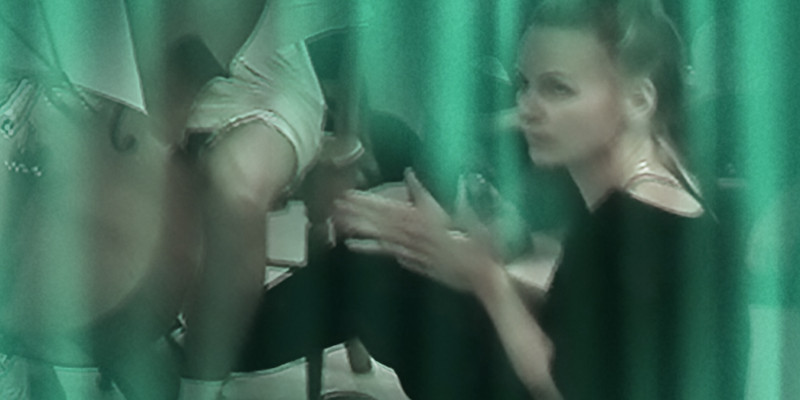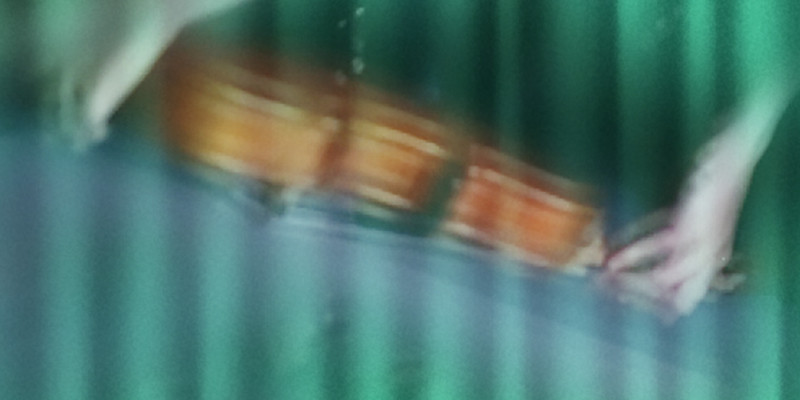Hell is full of musical amateurs, but so is heaven
Today, when we think of musical performance in Western art music, it is easy to take for granted the division of labour between, for example, musician and composer. However, music has obviously been produced for many thousands of years without there being a need to compose and write it down before playing it. Most genres of music have sustained and developed without this split between creator and performer. In genres where improvisation plays an important role, the musician sometimes embodies both the creative and interpretative acts, simultaneously. In musics built on aural traditions, the composed component is integrally bound to the musician.
However, as advanced and standardised technologies for the systematic notation of music were developed in Europe, the role of the musician slowly began to evolve in two, often separate, directions: one primarily responsible for the construction of music (composer), the other primarily responsible for the performance of it (musician). There is no doubt that composition and notation are extraordinarily efficient means of structuring, communicating and preserving musical ideas, and it is fair to assume that the development that led to the division of labour loosely sketched here participated in the advancement of Western music into new aesthetic areas.
Amateurism also holds an emancipatory power, giving permission to let go of the restraints of professionalism
Despite the advantages of the split between composer and performer, however, it has also come at a cost. What are the consequences and what effects has it had? Most intriguing to me is the question of the amateur, the non-professional music-doer, who is the antithesis of the brilliant expert performer. The amateur may be regarded as an embodied music listener who may attain a sensibility towards music that is inaccessible to the non-performing, disembodied listener. Amateurism also holds an emancipatory power, giving permission to let go of the restraints of professionalism – an emancipation which is so important for social, economical and technological developments in music, making the move from result to process possible.
***
If the splitting of the musician’s role into two is one significant trait of Western art music, the importance of the musical amateur for its development is perhaps another. Assuming that someone engaged in musical practice listens differently to music than someone who does not, regardless of whether their engagement is on a professional level or as an amateur, we may find that musical amateurs have been important for the aesthetic development of classical music. Not only does physical knowledge of how to play a piece of music in effect alter how you listen to it, but musical practice in general also appears to influence listening more widely. In other words, studying and learning how to play a piano sonata probably has an influence on how the individual experiences an orchestral piece through listening. And, as I experienced in the ensemble and research project The Six Tones, a transformation of knowledge from one kind of musical practice (e.g. Vietnamese) may be transferred to knowledge about another kind of musical practice (e.g. Western European experimental music) (Frisk, 2014; Frisk, 2013).
In his seminal essay ‘Musica Practica’, Roland Barthes points out that there »are two kinds of music (at least I have always thought so): the music one listens to, the music one plays.« (Barthes, 1977, p.149) The music one plays is an embodied and spiritual activity. This listening takes place through the body, through memories of muscular activity, and allows for a reading that is significantly different from listening passively to music. Barthes maintains that not only is there a difference between listening through playing, music performed by the amateur possesses particular quality, which the specialist cannot reach. His analysis goes beyond what at first seems like nostalgia for old times, and identities a subsequent change that has also altered music aesthetically:
»The amateur, a role defined much more by a style than by a technical imperfection, is no longer anywhere to be found; professionals, pure specialists whose training remains entirely esoteric for the public [...] never offer that style of the perfect amateur [...] touching off in us not satisfaction but desire, the desire to make that music. In short, there was first the actor of music, then the interpreter (the grand Romantic voice), then finally the technician, who relieves the listener of all activity, even by procuration, and abolishes in the sphere of music the very notion of doing.« (Barthes, 1977, p.150)
The amateur musical life that Barthes describes, however, has disappeared: the sons and daughters of the bourgeoisie are no longer likely to entertain their parents and friends in aristocratic salons by playing Mozart and other composers. Music sociologist Theodor Adorno remarks that the musical amateur ran into difficulties during the period of the dismantling of traditional European aristocracy: »The amateur’s best chance of survival may be where remnants of an aristocratic society have managed to hold out, as in Vienna.« (Adorno, 1976, p.6) It should be stressed, however, that the present discussion is limited to the field of Western classical music. The amateur musician is obviously still common in many, or even most, other styles of music.
It is in active listening that the work is understood, not in the preparatory phase of interpretation, nor even in the act of composition
Beyond what may seem to be a sentimental memory of a long-lost cultural activity, there is a more important consequence to the disappearance of amateur musicians and the concurrent development of the new functions of the musician. The quote above from Barthes should be understood in the light of his literary theory, according to which it is not the origin of a (literary or musical) work that should be the decisive point, but the destination (Barthes, 1977). It is in active listening that the work is understood, not in the preparatory phase of interpretation, nor even in the act of composition. The internal and coherent meaning of a text, according to Barthes, surfaces in the discursive and communicative act of reading. This is enabled by the special bond between text and reader, in a manner similar to that in which the relationship between music and the doer of music develops through the physicality of playing. In other words, a special kind of understanding is made possible by the physical resistance involved in playing an instrument; this understanding is not available in the »liquid, effusive and ’lubricating’ « (Barthes, 1977, p.150) experience of disembodied listening to »the technician, who relieves the listener of all activity« (ibid). I would argue that the consequences and underlying mechanisms of these topics are quite complex. I will return to the aspect of the physicality of playing and focus first on the social concerns of the matter.
Adorno gives some support to the idea that Western classical music has been influenced in important ways by active domestic music-making, activities that no longer take place in the same manner. He notes that the decline of chamber music in general coincides with a decline in amateur music making, and further that »chamber music remains possible, not as maintenance of a tradition that has long been moth-eaten, but only as an art for experts, something quite useless and lost that must be known to be useless if it is not to decay into home decoration.« (Adorno, 1976, p.102-3)
This description is strikingly similar to the critique offered by Barthes. Jacques Attali points out, somewhat pointedly, that the commodification of music can be said to have begun with copyright law.[1] But compositions were not the only entities in need of valorisation; performances needed to be valorised too. Obviously, musicians were paid, and compositions were commissioned also before the introduction of copyright laws; but the commodification of music as a practice was greatly enhanced by copyright laws. As Jacques Attali puts it: »in order for music to become institutionalized as a commodity, for it to acquire an autonomous status and monetary value, the labor of the creation and interpretation of music had to be assigned a value.« (Attali, 1985, p.51)
In other words, for the as yet non-existent music industry to develop, all aspects of the creation and performance of music had to be professionalised.
In his alternative overview of music history, in which he also draws upon Barthes, Michael Chanan focuses on the great commercial exploitation of music listening as a factor that prompted the disappearance of the concept of the musical amateur. In this process, the musical amateur was simply an obstruction:
»In driving out the amateur, the whole vast modern commercial apparatus of music conspires to reduce the listener to the condition of compliant consumer, and thus to induce passive reception instead of active listening. The concert becomes parasitic upon the fame and success cultivated in the festival; the festival is the showcase which the impresario needs to capture for the promotion of the artist; the artist to catch the impresario’s attention, must now win international music competitions.« (Chanan, 1994, p.29)
Not only do we witness here the need for the field of music performance to become commercialised; we also see the rise of the star, the virtuoso, whose perfect renderings of perfect compositions in itself disallows the amateur performer. The musical equilibrist, the virtuoso delivering outstanding technical brilliance, is a product enabled as much by the professionalisation of the trade of musical performance as by the division of labour. As performers no longer need to take responsibility for the organisation of the musical material nor to improvise, they are able to focus fully on refining technical dexterity. These master performers have become exceptionally important figures for music—and the music industry—since the mid 19th century. The role transcends genre borders, and there is a straight line from Beethoven’s Diabelli Variations (to which we will return soon), composer-performers such as Lizst, and someone like the Swedish Heavy Metal guitarist Ynqwie Malmsteen. The mastery involved in a staggering performance is a quality that stands by itself and feeds the myths surrounding this field.
The equilibrist is the performer’s equivalent of the Romantic composer genius. The ideal performance of a score by a virtuoso performer, whose artistic goal it is to fully adhere to the wish of the composer, risks resulting in an idealist reduction of the music to a smooth, two-dimensional representation in the form of musical notation. Whether this ‘composer’s wish’ is known from first-hand communication with the composer, or extracted from sources such as the score, bibliographic references or research by others, is not really important here. This idealist reduction, claims British electronic music composer Trevor Wishart, is one consequence of a view of music according to which the score »is seen as normative for the musical experience« and where »the spatialisation of the time-experience which takes place when musical time is transferred to the flat surface of the score leads to the emergence of musical formalism and to a kind of musical composition which is entirely divorced from any relationship to intuitive gestural experience.« (Wishart 1985, p.35)
The ideal performance of a score by a virtuoso performer, whose artistic goal it is to fully adhere to the wish of the composer, risks resulting in an idealist reduction of the music to a smooth, two-dimensional representation in the form of musical notation
Wishart’s mention of “gestural experience” is obviously related to the muscle memory of the performer as an embodied listener, discussed above. Using the score as a proxy in the communicative act of musical performance is what Wishart is criticizing, and as such it is clearly a reduction of music as a phenomenon. Intuitive gestural and embodied experiences take time, space and money.
What several of these writers are pointing at is an increased distance between the music listener and music’s different sites of production. This alienation is manifold. It appeared first between composer and composition, as a consequence of the fact that the act of inscription became detached from performance. The score became a product and a work independent of its sonic trace. Wishart concludes that. »with the increasing domination of notation, there has been a move towards Platonic idealism in our conception of what music is. In the most extreme cases, music is viewed as an essentially abstract phenomenon and the sound experience of essentially secondary importance.« (Wishart, 1985, p.35)
It should come as no surprise, then, that music is affected by how it is represented. As a result of the economy of specialisation and division of labour came the professionalisation of the master musician, the technical wonder, exploited as an entertainer who eventually produced the passive and disembodied listener. The hierarchical nature of classical music is difficult to ignore here, and at its worst, it leads to the listener being alienated from the music, as well as the composer from the musician: a state of affairs which by extension should render all musical activity useless. When listeners no longer can maintain a physical relationship to the music, either because they cannot play it or because they do not understand it, only its social value is left.
The musical dilettante is an anachronism
Even if today there were still bourgeois salons with plenty of opportunities for amateurs to meet and play, it would not be contemporary music. The aesthetic development in Western classical music over the last century has made the musical dilettante into an anachronism. Can we even imagine a musical amateur engaging in the performance of Boulez’ Piano Sonata No. 2 or Ligeti’s Etude at a social gathering at home? With reference to Boucourechliev’s often cited ‘Essay sur Beethoven’, Barthes points to how the great composer’s ‘Diabelli Variations’, completed in 1823, marks the end of understanding through hearing or playing: from here on Beethoven needed to be read. The listener needs to participate in the making; »with respect to this music one must put oneself in the position or, better, in the activity of an operator who knows how to displace, assemble, combine, fit together.« (Barthes, 1977, p.153)
We have held on to the general structure of Western classical music over time. We have the same concert-halls, the same kinds of ensembles, the same social structures, conductors, soloists, virtuousi and eccentric composers. But the aesthetic and social underpinning has changed so much that it is now difficult to make sense of relations between roles within the system. Boulez’ music, like Beethoven’s ‘Diabelli Variations’, is music that requires an operator rather than a listener.
The aesthetic development in Western classical music over the last century has made the musical dilettante into an anachronism
The amateur musician was the operator at one point. Then the score – the text, the writing – changed in a way that raised the need for a different kind of performer (a technician), and a different kind of listener (an assembler). Barthes’ postmodern tools have some flaws when transferred to the field of music, and they may not give us the full picture, but they are helpful nonetheless.
The last piece of the puzzle, the final advancement that made the amateur musician obsolete altogether, was the introduction of radio and modern recording technology. The dramatic increase in available listening sources, and the added level of perfectionism that modern techniques for editing recordings allows for, makes Barthes observation about a specialist’s music that has become »entirely esoteric for the public« alarmingly accurate. Why bother to learn how to play the piano, only to render poor versions of Schumann’s piano pieces, when I have access to fifty excellent quality recordings at the blink of an eye? This can be seen as another and consequential division of labour, and it offers a slightly altered view on the music recording industry. Liberated from the burdens of playing music by offering perfect recordings, the listener can concentrate on consuming more music. And it is more lucrative to sell interpretations, of which there can be an infinite number, than to sell scores.
Portsmouth Sinfonia
In 1970 the British improviser and composer Gavin Bryars put together a group of musicians associated with the Portsmouth School of Art in Great Britain. The orchestra, Portsmouth Sinfonia, played pieces from the standard classical repertoire such as William Tell Overture by Rossini and Jupiter from The Planets by Holst. The peculiar thing about this ensemble, however, that dissociates it from other orchestras, is that the group was generally open to anyone, regardless of musical training. Musicians who were accomplished instrumentalists could join the orchestra, but would then have to play an instrument they did not master or choose to play an instrument that was new to them.
The Portsmouth Sinfonia was the Western classical music’s version of punk, but materialized several years before Sex Pistols arrived on the scene. As conceptual art, Portsmouth Sinfonia is exceptionally powerful. It effectively critiques the powers of exclusion that the world of classical music maintains. Everyone who listens to their performances understands
that the music is not well performed in the traditional sense; there is very little nuance in the “badness” of the music. At the same time, it is obvious to anyone who listens that only a genuinely enthusiastic performer would persist with playing this music in this manner, and this fact loads the performance with passion and spirit. Discussing quality in traditional orchestra performances can often be an activity closed to anyone except the most engaged listeners, critics and musicologists. Subtle changes of tempo, phrasing and agogics make a world of difference to the initiated and knowledgeable listener, while these are qualities nearly impossible to grasp by the uninitiated. For the Portsmouth Sinfonia, the search for perfection and absolute precision is forsaken and replaced by the sheer joy of playing. It is quite amusing to listen to their rendering of ‘An den schönen blauen Donau’, out of tune and out of time, but despite the layers of bad treatment that the score is subjected to, the performance is still, in some sense, “true to the score”, insofar as there is no doubt that this is really Johan Strauss’ II famous waltz.
But this music is about much more than humour. The Portsmouth Sinfonia’s version of Also Sprach Zarathustra makes audible the physical effort involved in the performance in a way that a “professional” rendering of the piece disguises. The body of the performers is heard and the resistance in the performance is brought to the foreground; it adds a quality that a skillful performance would attempt to hide.
What I would wish for, and what I try to do, is to go full circle: to invite the audience to take part again, to join the performance
Before I was aware of Gavin Bryars’ work, I experimented with methods of suppressing the deep-rooted search for perfection in my own playing (Frisk, 2013). Excellence and precision can sometimes curb even the most ardorous performer, and stall artistic development. I sought new openings by approaching my instrument as if I had no idea how to play it, with the devotion and eagerness of a child. In the absence of drugs or other substances, however, it is obviously impossible to undo thousands of hours of practice and reach a level of true naivety. Rather, we are talking about methods to temporarily bypass the artistic super ego. Constant self-evaluation in search of an optimal result may take the focus away from the process, materiality and conceptualization of artistic practice. Creativity is not always ‘good’ - it may be ugly, unpleasant, provocative and even repulsive - and a practice that denies these negative qualities will in the end also dispute the full creative potential.
What the Portsmouth Sinfonia shows to me is closely related to the way Barthes showed us how the text can be at the centre, while avoiding the kind of musical logo-centrism that Wishart is warning us about. While what they do is music, that fact that the music is not ‘well performed’ does not alter the conceptual value of the art, the text. As a matter of fact, had their version of An den schönen blauen Donau been excellently performed, the work would have been redundant and uninteresting. It is the way they operate the text (the text in this case would be the general concept, the score and the instructions) that makes it great.
This is similar to the way in which many composers today are exploring the boundaries of their own practice. They enter the creative process and the performance from angles that are unexpected, allowing them to read the practice, and read the work, in ways that are not accessible from the composer’s desk. They become amateurs in one sense, while the extension of the practice is absolutely natural. Artistic practice is no longer an isolated activity leading to a work. It is a perpetual movement that only occasionally stops to deliver a temporary performance. The key to understanding one particular instance of the movement (which I have called a work-in-movement (Frisk, 2008)), however, is not the work as a work, but rather the work-in-movement: it is the context that allows us to operate, displace, assemble, combine and fit together. What I would wish for, and what I try to do, is to go full circle: to invite the audience to take part again, to join the performance.
[1] According to Attali copyright laws were originally not primarily there to protect the artist’s rights. They were tools of capitalism against the feudalism that was ruling at the time. (Attali, 1985, p.52)
References
Adorno, T. (1976). Introduction to the sociology of music. The seabury press, New York.
Attali, J. (1985). Noise: The Political Economy of Music. Trans. by B.Massumi. Vol. 16.
Theory and History of Literature. University of Minnesota Press.
Barthes, R. (1977). Image, Music, Text. Trans. by S. Heath. Fontana Press.
Chanan, M. (1994). Musica Practica: The Social Practice of Western Music from Gregorian Chant to Postmodernism. Verso.
Frisk, H. (2008). “Improvisation, Computers, and Interaction: Rethinking Human-Computer Interaction ThroughMusic”.PhDthesis. Faculty of Fine and Performing Arts, Lund University.
Frisk, H. (2013). “The (un)necessary Self”. In: (Re)Thinking Improvisation: artistic explorations and conceptual writing. Ed. by H. Frisk and S. Östersjö. Lund University Press. Chap. 5, pp. 143–56.
— (2014). “Improvisation and the self: to listen to the other”. In: Soundweaving: Writings on Improvisation. Ed. by F. Schroeder and M. Ó hAodha. Cambridge Scholars Publishing.
Wishart, T. (1985). On Sonic Art. Imagineering Press, York.



